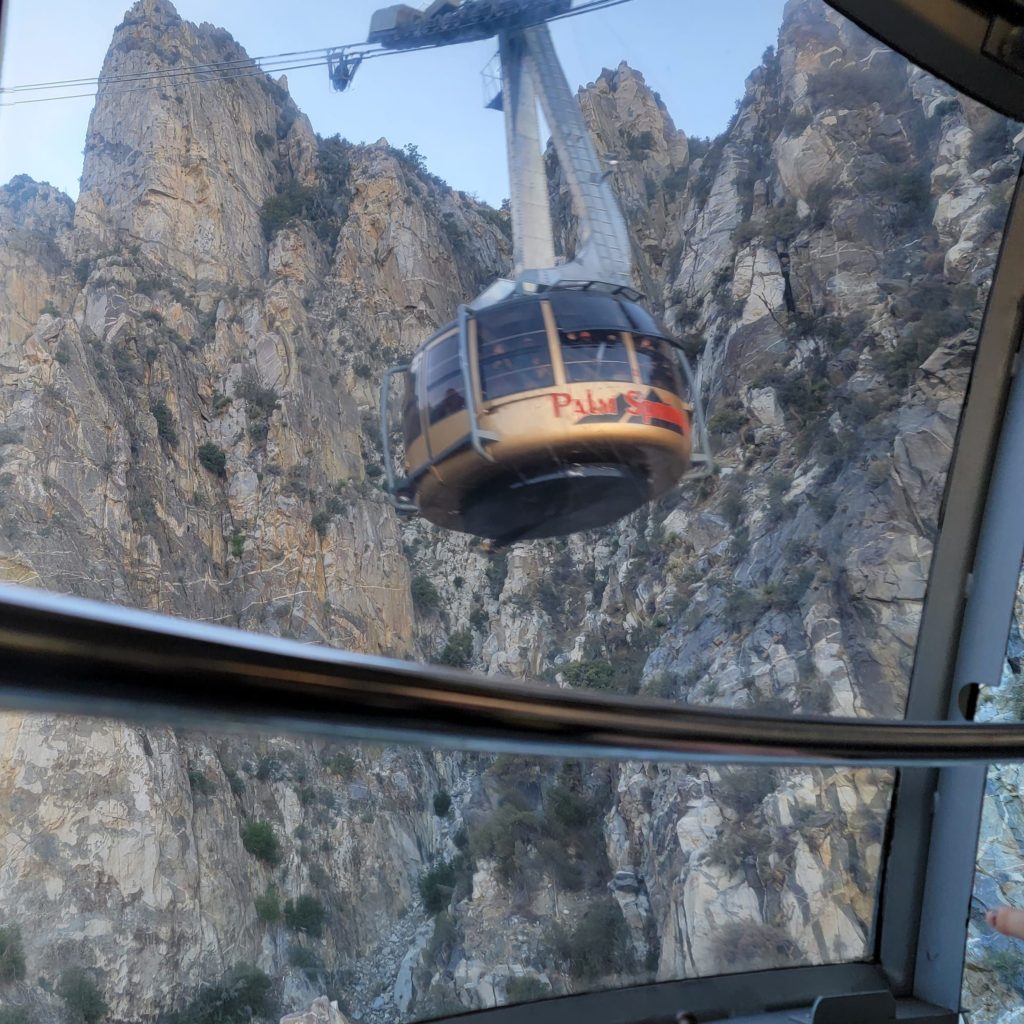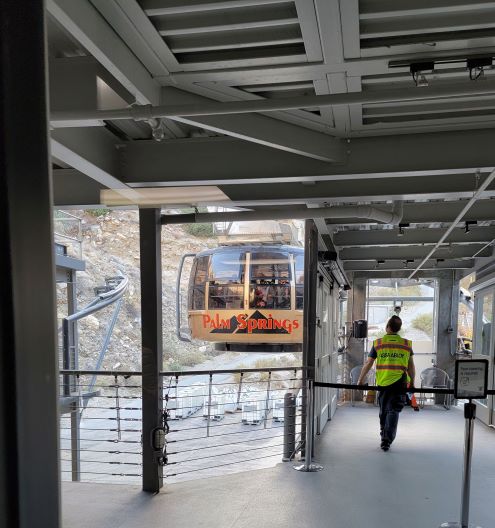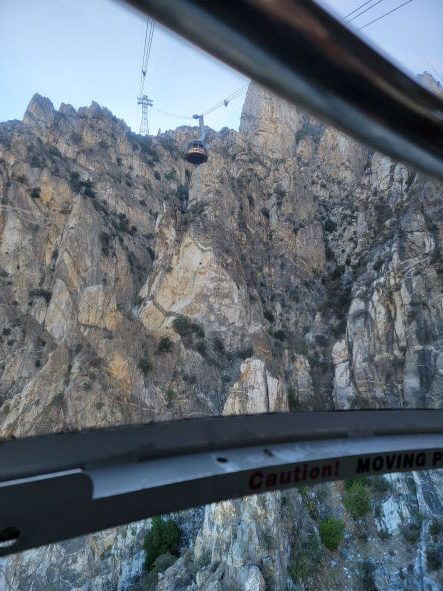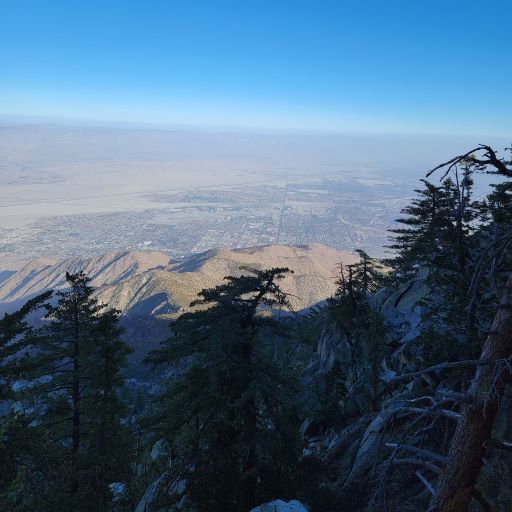Palm Springs Aerial Tramway
The Palm Springs Aerial Tramway is the world’s largest rotating tram car.

Recently, we rode this amazing vehicle through the sheer rock cliffs of Chino Canyon to the top of the wilderness of the Mt. San Jacinto State Park.
First some facts and history… It all started in 1935 when a young electrical engineer, Francis Crocker, decided he wanted to get to the top of Mount San Jacinto. This 10,834 foot peak still had snow during a heat wave on the valley floor.
Many issues, delays, and WWII postponed his plans until a new tram bill was passed in 1945, creating the Mount San Jacinto Winter Park Authority. By 1950 private funds had been raised by selling bonds, land had been acquired for the Valley Station, and technicians had designed the tramway. Not one cent of public money was used for the construction or the operation.
Construction was a challenge for the engineers. The first tower is the only one that can be reached by road. Helicopters were used to erect four of the five supporting towers. They flew 23,000 missions during 26 months of construction. Men and materials needed to erect the other four towers and the Mountain Station at the top all came by helicopter.
At the top of each tower is a 16’ x 16’ yellow helicopter pad. This allows access to the towers in times of maintenance for the Tram. Tower one is the tallest of the five supporting towers. It is 227 feet and is the only one accessible by road.
Completed in 1963, the challenges in building earned the label the Eighth Wonder of the World. Twenty-five years later the Tramway was designated an historical civil engineering landmark.
In 1998, the Tramway started an ambitious project that would modernize the old tram cars and update the facilities. In September 2000 the world’s largest rotating tramcars made their debut.
Since 1963 over 20 million people have traveled the 10-minute, 2.5-mile ride. Beginning at the Valley Station elevation of 2,642 the ride ends at the Mountain Station elevation of 8,516 feet.

In 1965, I rode the old Tramway car to the top. It swayed slightly as we passed by the breathtaking rock sides and dipped at each tower. It was exciting, exhilarating, and a little frightening. The valley floor was about 100 degrees and the top was over 60 degrees colder. We didn’t stay long at the top.
Two weeks ago, I rode the new Tramway rotating car to the top. Once again, it’s mind-blowing to see how close the Tram car comes to the sheer rock cliffs. Rotating slowly gave us great views of those cliffs, the San Jacinto Mountains, the valley floor far below, and the enormity of the towers.

There was no noticeable swaying, until we passed one of the towers. Then, it was slight. Not at all like I remembered from 1965. This ride was smooth.
With windows open along the top of the Tram car, the breeze coming in dropped significantly as we rose toward the top. Sweaters or jackets were definitely needed, especially on the side of the mountain facing the valley floor. Winds whipped around, making it seem colder than the 43 degree day at the top.
We spent some time wandering a few trails, exploring the observation decks and the natural history museum, and just marveling at how on earth Francis Crocker even thought of this idea.
Comparing my two visits, there were some things I enjoyed about the first Tram. It was a new venture, it was exciting, and I had never done anything like it. Having said that, there are more things I liked about this Tram. I appreciated it more, especially the difficulty in constructing it, and spent more time marveling at how an idea like this even took shape.

If you are in the area, The Palm Springs Aerial Tramway is an activity well worth your time.
Note: Tickets can be difficult to purchase during busy times of the year. Check the website https://pstramway.com/tickets/.
If You Go: The Palm Springs Aerial Tramway is located at 1 Tram Way, Palm Springs, CA.
For more trip ideas and travel plans check out https://travelsandescapes.net/